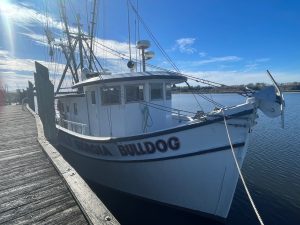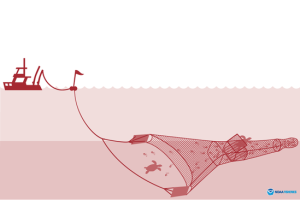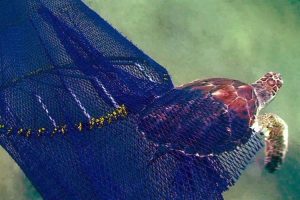
Back in the day when thousands of shrimp boats trawled the Gulf, Atlantic, and bays along the coast, fishing was a bit of a free-for-all. Shrimp populations were abundant, but catching unintended species (bycatch) was a fact of life. Up to the mid-20th century, non-target species caught in the nets were simply collateral damage. Most of us likely recall the advent of “dolphin-safe” tuna after many widely reported fatalities of dolphins trapped in tuna fishing nets. Eventually, public pressure coupled with scientists focused on wildlife conservation helped bring needed changes to industry practices. Dolphins weren’t the only animals entangled in nets—endangered sea turtles were, as well.

Once the momentum started in the 1970’s to protect endangered species, the race was on to develop new gear that accomplished these goals while allowing fishermen to keep their livelihood. Sea turtles can be quite large, and anything that allows a turtle to get loose from a fishing net could allow thousands of shrimp to escape, too. So, the creative folks among the fishing community started figuring out ways to prevent turtles from being caught in the first place or to escape once they enter. Known as turtle excluder devices (TEDs), numerous new techniques and additions to existing nets were developed in hopes they would work in the field.

Multiple versions were tested, with wide variations in success rate. Through the 1980’s, TEDs were voluntary and used mostly because they were also effective for blocking jellyfish and finfish. The basic design that finally won out—and is still being used today—has a funnel blocked by a metal grate with horizontal bars. The bars are too thin for a turtle to enter but wide enough for shrimp to go through. Researchers observed sea turtles tend to swim towards the surface when trapped, so they adapted the net to create an opening at the top, near the TED.


Research on the use of TEDs shows a 97% effectiveness rate in preventing sea turtle entanglement since they came into practice. By the late 80’s, TEDs were required on shrimp fishing boats.
Due to many factors, including gas and boat maintenance costs, shrimp diseases, climate change, an aging workforce, and competition from foreign aquaculture, the shrimp boat fleet in the Gulf and Atlantic has dwindled significantly. The same Georgia fishermen who helped design the first working TEDs are now retiring and unable to pass the family business down to the next generation.
If you can, buy locally caught shrimp, and know that it’s being harvested in a way that also protects our endangered wildlife species.
 7
7
